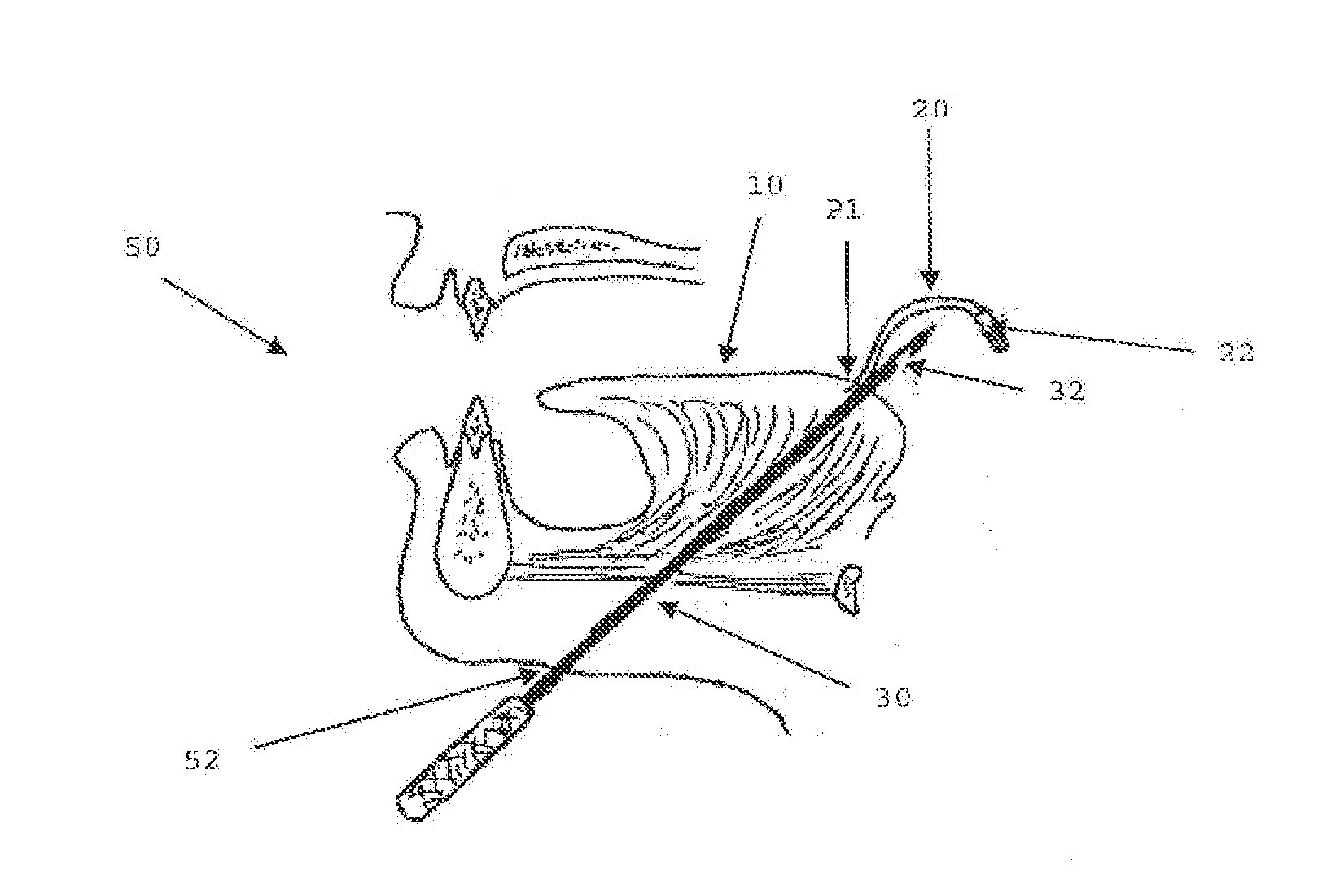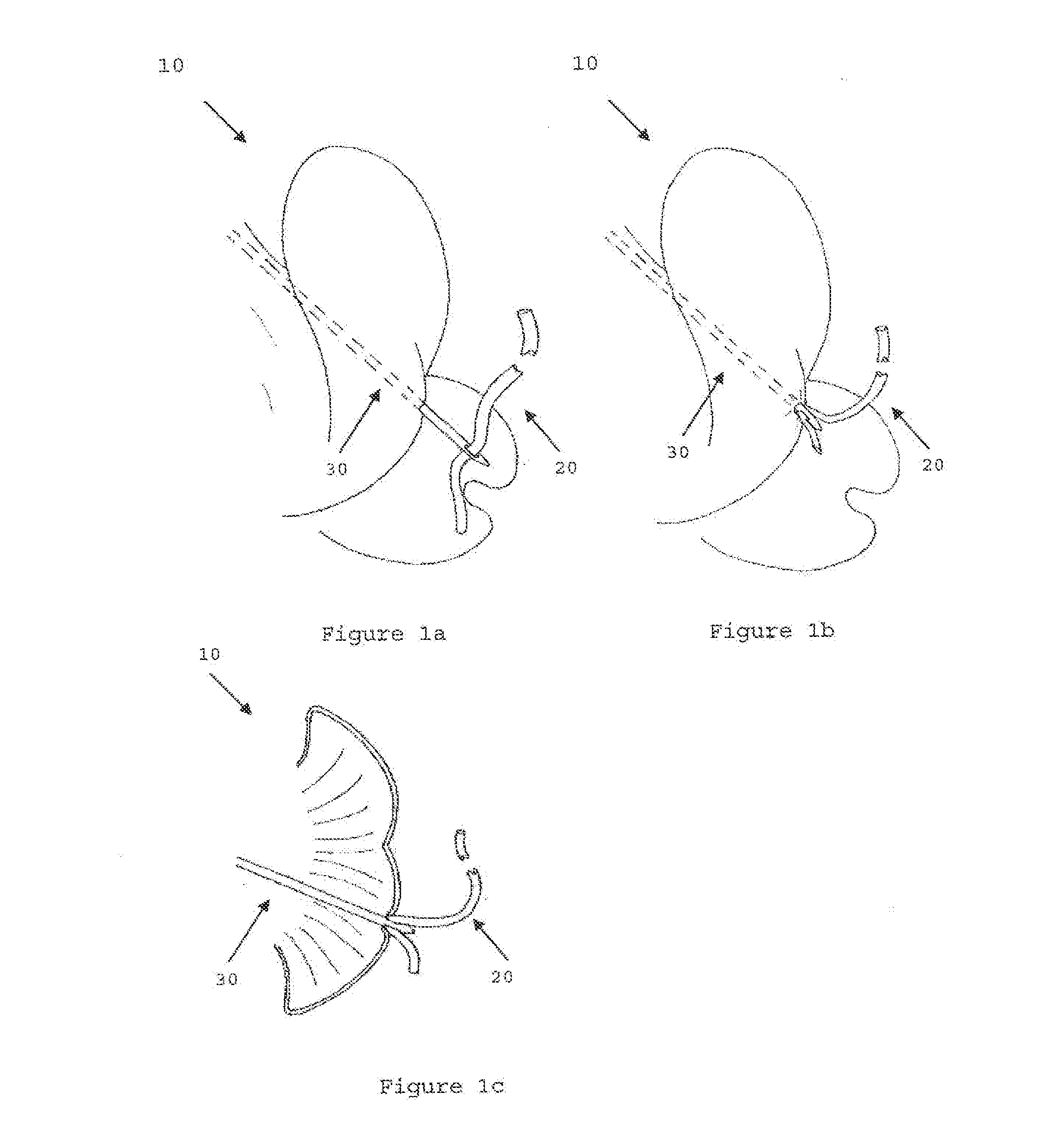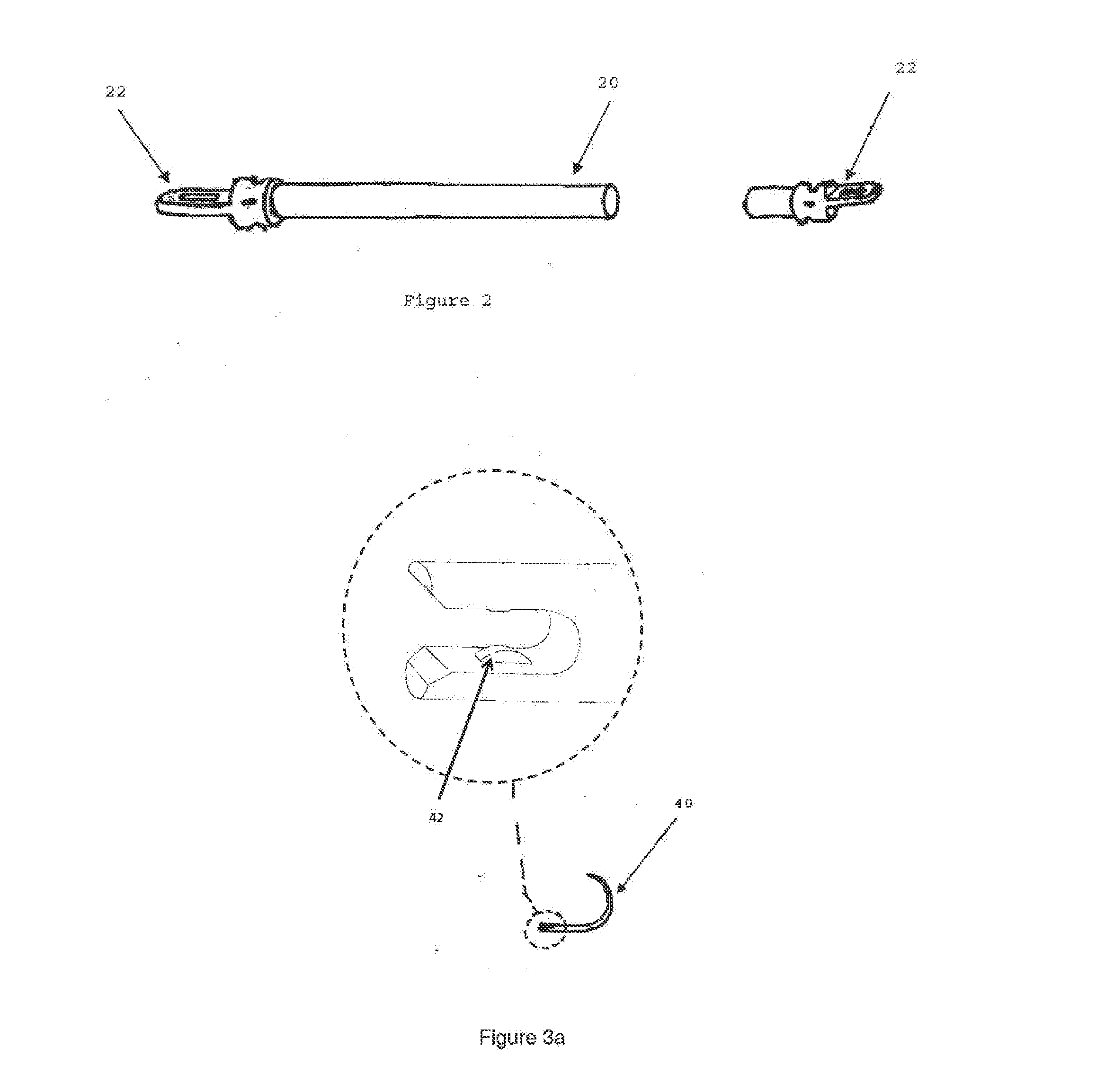Modular Tissue Securement Systems
a tissue and module technology, applied in the field of tissue securement systems, can solve the problems of osa sufferers remaining undiagnosed and untreated, affecting the quality of life of patients, so as to minimize tissue trauma
- Summary
- Abstract
- Description
- Claims
- Application Information
AI Technical Summary
Benefits of technology
Problems solved by technology
Method used
Image
Examples
Embodiment Construction
[0031]The present invention relates to a tissue securement system that is able to be placed with minimal tissue trauma. The system consists of three key functional components. The system includes a suspension fiber that has modified ends, a releasable needle, and a linear suture passer. The releasable needle and linear suture passer are designed to engage with the modified ends of the suspension fiber.
[0032]As used herein, the terms “suture” and “fiber” may be used interchangeably. Additionally, the terms “suture passer”, “fiber passer” and “tissue passer” are intended to be used interchangeably.
[0033]FIGS. 1a-1c illustrate a suspension system for securement of tissue 10 (in this case a tongue) that consists of unmodified fiber 20 and suture passer 30. The suture passer 30 illustrated comprises a tapered tip rod with an eyelet. In use, fiber 20 is manually threaded through the eyelet of suture passer 30 within the oral cavity as shown in FIG. 1a. FIG. 1b depicts fiber 20 as it begin...
PUM
 Login to View More
Login to View More Abstract
Description
Claims
Application Information
 Login to View More
Login to View More - R&D
- Intellectual Property
- Life Sciences
- Materials
- Tech Scout
- Unparalleled Data Quality
- Higher Quality Content
- 60% Fewer Hallucinations
Browse by: Latest US Patents, China's latest patents, Technical Efficacy Thesaurus, Application Domain, Technology Topic, Popular Technical Reports.
© 2025 PatSnap. All rights reserved.Legal|Privacy policy|Modern Slavery Act Transparency Statement|Sitemap|About US| Contact US: help@patsnap.com



